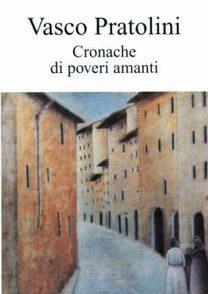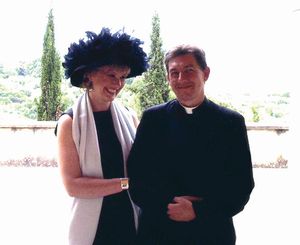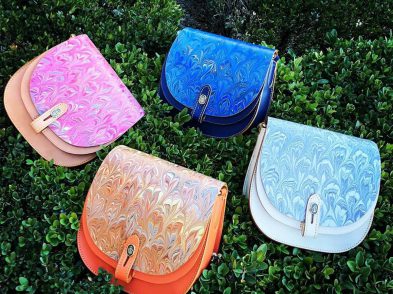We often hear that the old Florentine craftsmen are slowly disappearing, retiring without successors after lives dedicated to their work, or defeated by technology an cheap mass-production. However, there is yet another generation of talented local artisans who have learnt the mestiere from their fathers the old way and, following their footsteps, continue the tradition of the great artigiani-decorators, engravers, lacquerers, cabinetmakers, goldsmiths-of the Oltrarno.
Giacomo Oleandro is one of these young talents. The son of a cabinetmaker in the Santo Spirito neighbourhood descends from a long tradition: his grandfather taught the craft to Giacomo’s father and his four brothers. His grandmother’s father was a cabinetmaker.
Giacomo’s apprenticeship started when he was only 17 years old and still in school. Like Renaissance apprentices in the workshops of the Italian masters, and like his father, Bruno, who was an apprentice at 11, Giacomo began with humble tasks: sweeping, preparing materials and tools, running errands and, especially, watching themaster at work. By watching, he learned the techniques and the secrets of the craft. Gradually, he started preparing components that his father would then assemble, discussing with clients, preparing projects. Then, he was allowed to work autonomously on his own pieces.
‘However, the observation never ends’ explains Bruno. A cabinetmaker ‘steals with his eyes’ all the time: ‘If he has good eyes, he can reproduce whatever he sees, just by using his memory and his hands’. While Bruno’s approach to the craft is more intuitive, his eye being his only measuring instrument, Giacomo, thanks to his studies in drawing, adds mathematical accuracy to intuition. ‘My father can create an object from an image in his mind’, he explains. ‘Never being a good draftsman, he would only rely on his excellent sense of proportion. I, instead, always start my work by sketching the object on a piece of paper. The drawing contributes in perfecting the idea. Today, my father acknowledges the benefits of drawing in our work’.
Drawing and some basic machines added to the workshop through the years have increased productivity and improved quality. Both father and son, though, are very careful about what technology they adopt; they agree that too much technology can destroy the quality of their work. As Giacomo explains, one of the main lessons he learned from his father is to respect the identity of the object and never compromise for easy profit. ‘My work would be much easier if I used preconstructed parts bought from furniture industries instead of making every single piece myself. It would save time, but to me that would be cheating’.
Like his father, Giacomo searches for a type of perfection that no machine could ever reach: the perfection of imperfection: ‘It’s the imperfection of the handmade object that makes it immediately recognizable, that makes it unique’, Bruno explains, ‘Machines make everything too clean, too predictable’. Above all, they annihilate the special bond between the creator and his creation. ‘The cabinetmaker’s creative process is an intimate and very personal one. The object is accompanied through each step of the whole process of its formation, from the choice of the wood-its grain, cut and age-to the final product. This solicitude gives an individual identity to every single artefact. And it’s greatly rewarding for the craftsman, too’.
This special bond outlives the many changes in the profession of cabinetmaking. This is no static profession and great flexibility is required. It’s all about adaptation: ‘One has to keep up with its natural evolution,’ says Bruno. ‘The introduction of new materials, for example: as national woods are too expensive and less used, exotic woods (also thanks to globalisation) are much easier to find today than in the past. Craftsman must be aware of new techniques, too, which usually change according to the new, more modern machines introduced and the reduced times. And, of course, taste changes’. From the delicate lacquered furniture so fashionable in the States when Bruno began, to the solid walnut furniture most requested in the 1970s and today’s essential made-to-measure furniture, the cabinetmaker’s best school is experience and change. The more he practices on new and challenging projects, in fact, the more he learns and improves. ‘No book can teach you that’, Giacomo explains, describing the training of a lifetime.
Now that Bruno has retired, Giacomo continues the family trade alone, but not without innumerable difficulties: the competition of furniture industries, the extinction of other Oltrarno botteghe, the current economic crisis, the general uniformity of taste. Despite all this, like many young artisans taking over their fathers’ workshops, Giacomo remains faithful to his craft, aware that he is one of the few left today in Florence who holds the keys of the tradition of the great Florentine master cabinetmakers.
Giacomo’s workshop is in Borgo Tegolaio, 52/r, Florence.






